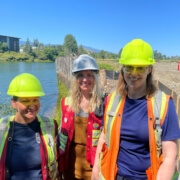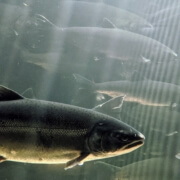Fish wheels in the Fraser River: First Nations, PSF study salmon migration
Tagging Fraser Chinook to identify salmon migration disruptions.
Fraser River Chinook salmon have experienced declines for many years. As a result, at least 15 of the 17 wild populations of Fraser Chinook are considered at-risk. Still, their migration has not been well-studied because their return to the Lower Fraser occurs during the spring thaw, or freshet, a challenging time to study fish.
A partnership between the Pacific Salmon Foundation (PSF), Matsqui First Nation, Yale First Nation, and Fisheries and Oceans Canada (DFO) is tagging adult Chinook salmon and tracking their migration to identify potential locations where the fish face impediments as they journey to their spawning grounds.
“One of the very first laws we have as First Nations is protecting resources for the next seven generations to come. By doing this tagging work, I hope it will help protect salmon stocks,” says Brenda Morgan, Matsqui First Nation councillor and fisheries representative.
Morgan, worried about the effects of climate change and pollution on wild salmon, is keen to advance efforts to conserve salmon and protect habitat in the Lower Fraser.
“My grandmother and my mother used to fish from Thursday through Sunday. No problem. Never did you hear any of this talk of limited numbers,” she says. “Now, we’re down to hours in the season, so there’s big writing-on-the-wall that we’re doing something wrong, and we need to fix it.”
High flow conditions in the Fraser, expected to become more common as climate change increases extreme weather events and alters snowmelt timing, pose migration difficulties for salmon. When flows are high, salmon require more time and energy to reach their spawning grounds, influencing their survival. For example, high flows in 2020 led to Fraser salmon not showing up to Big Bar, a section of the Fraser 64 kilometres north of Lillooet, for the first four to six weeks of their migration, indicating that flow conditions in the lower parts of the Fraser Canyon were holding them up.
“Given the increasing evidence of climate effects across B.C., we need to study salmon behaviours in the migration corridors of the Fraser,” says Jason Hwang, PSF’s VP of Salmon. “Intending to assess potential migration disruptions, we hope to identify areas where it may be possible to improve migration conditions, making the journey easier for salmon and improving survival outcomes.”

A fish wheel operated by Matsqui First Nation.
Large rotating, water-powered fish wheels in the Lower Fraser enable salmon to be caught, radio tagged, and released and tracked.
During the peak tagging season, a team of five operates the Matsqui fish wheel every day, including two staff from LGL Limited, an environmental and research consulting firm, and three technicians from Matsqui First Nation. The crew ensures all equipment is in working order and maintains the fish wheel’s zero-per-cent mortality rate throughout its use.
In the first year of the project, 98 adult Chinook were tagged. Early results show that many of the tagged salmon stayed within the Lower Fraser for a substantial amount of time, some more than 40 days.
During the first year of the project, an unexpected number of American shad were captured at the fish wheel, but little is known about these anadromous fish in the Fraser.
American shad, introduced to the West Coast from the Atlantic Ocean in the 19th century, have proliferated in some Pacific systems. This year, PSF purchased additional tags to track up to 100 American shad to assess their migration and how they are using the Fraser River.

American shad caught at the fish wheel in July 2021.
Now in the second year, the project team continues to tag, track, and monitor the progress of salmon throughout the summer and fall as they return to their rivers and streams throughout the Fraser.
DFO is also tagging and tracking salmon in the Fraser to assess sockeye migration. Combined, PSF and DFO’s tagging projects provide in-depth tracking coverage for salmon in the key migration corridors in the Fraser.
This project is part of PSF’s Climate Adaptation Program launched in 2021 and supported by the B.C. Salmon Restoration and Innovation Fund.
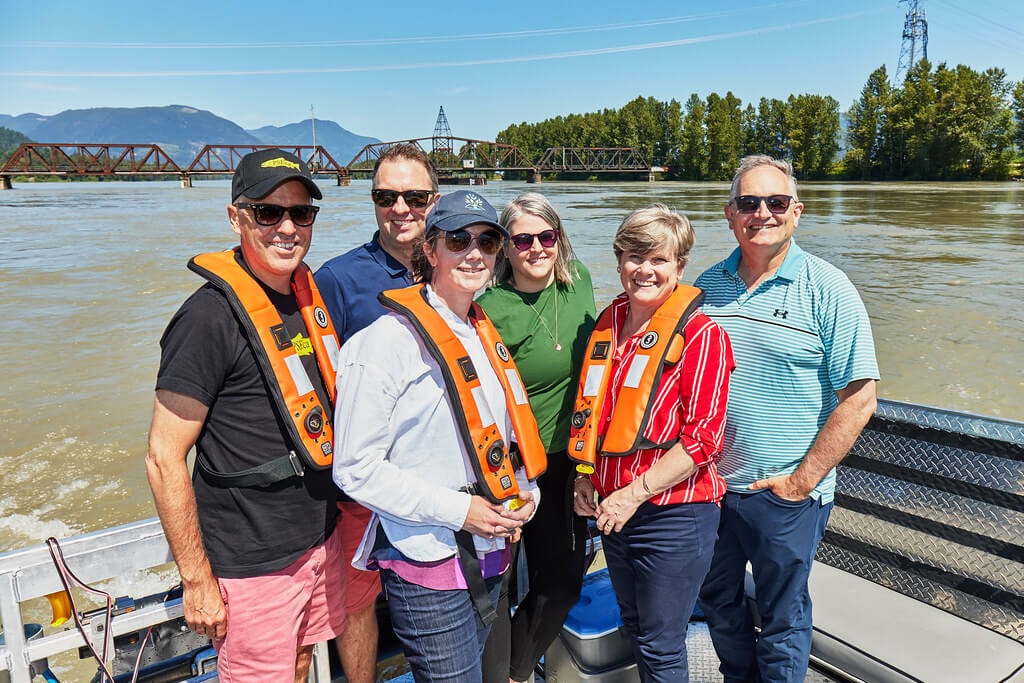
From left to right: Michael Meneer, PSF President & CEO; Jim Shinkewski, Director of PSF’s Community Salmon Program; Monica Pearson, Ministry of Land, Water and Resource Stewardship; Kristina Lensky, Resource Manager, Stewardship – Strategic Land Use Coast Area – South Region, Ministry of Land, Water and Resource Stewardship; Hon. Josie Osborne, Minister of Ministry of Land, Water and Resource Stewardship; Bob D’Eith, MLA of Maple Ridge-Mission.
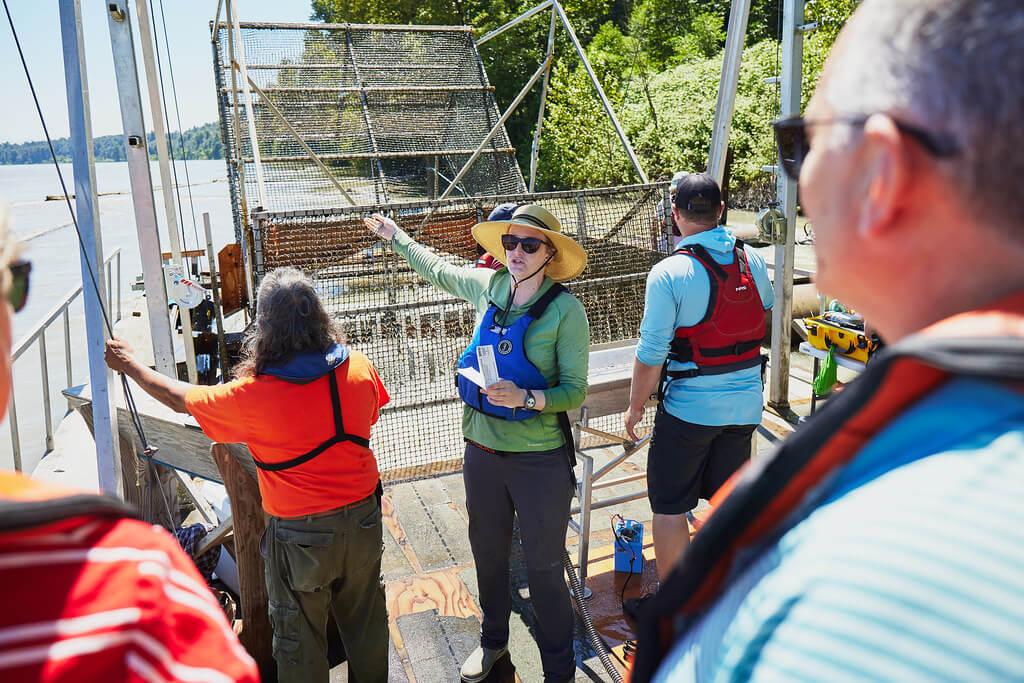

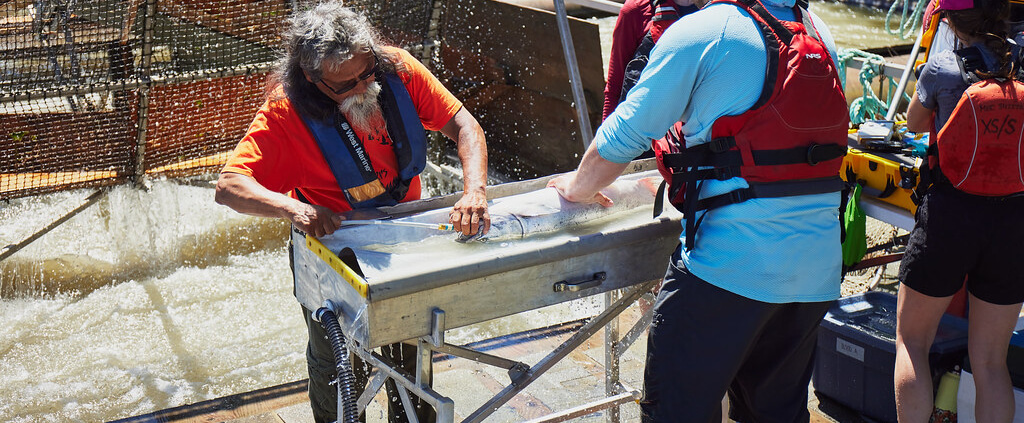
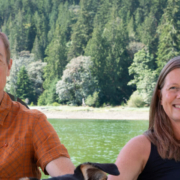
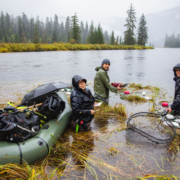
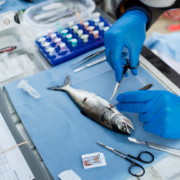 Amy Romer
Amy Romer